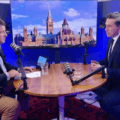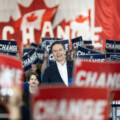Welcome to The Hub’s Federal Election 2021 Policy Pulse, where we’ll be tracking all the policy announcements from the major parties, with instant analysis from our crew of experts.
With the election scheduled for Sept. 20, we’ll be monitoring 36 days worth of policy ideas, so watch out each morning for the day’s live blog where we’ll be tracking every announcement as it happens.
Saturday
Liberal leader Justin Trudeau was in Aurora, Ontario to make a 9 a.m. announcement.
Conservative leader Erin O’Toole was in Dundas, Ontario to make an announcement at 10:30 a.m.
NDP leader Jagmeet Singh was in Saskatoon to make a 10:30 a.m. announcement.
Recommended for You

Fred DeLorey: Why the NDP may be in even bigger trouble than we think

‘We have to cap population growth’: Ten quotes from Pierre Poilievre’s EXCLUSIVE Hub interview

A win, a warning, and a wobble in Alberta’s byelection results

‘We now have to build on the coalition’: Pierre Poilievre on his federal election loss and the future of Canada and the Conservative Party



